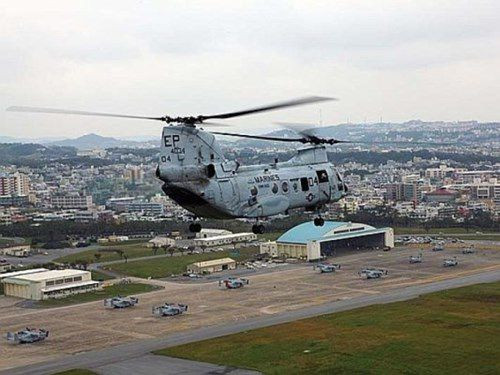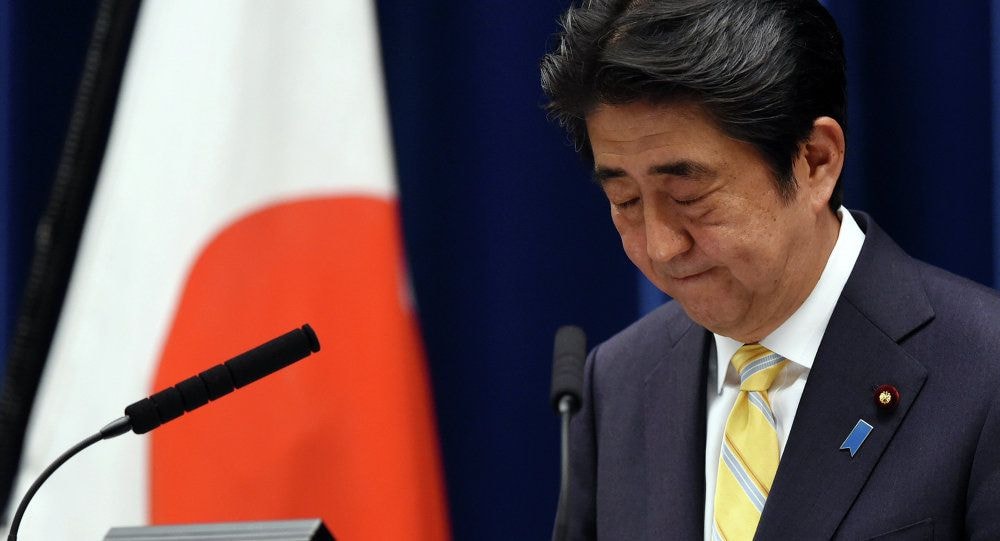Japan is in turmoil again over the US military base.
(Baonghean) - The Japanese Okinawa prefectural government has just filed a lawsuit against the central and local government dispute settlement committee under the Japanese Ministry of Internal Affairs for revoking the permit to build a US military base in the Henoko coastal area of Okinawa. These developments once again put Japanese Prime Minister Shinzo Abe in a "difficult position" when he has to balance between the Okinawan government and people on one side, and the close ally, the US, on the other.
"The top says, the bottom doesn't listen"
For nearly two decades, protests by Okinawan people against the presence of the Futenma military base have been happening “every day”. The noise from US fighter planes flying in the sky and the risk of plane crashes are a constant presence in the lives of the people here. Those concerns are not unreasonable when last August, a US military plane crashed on this island, injuring 7 crew members.
 |
| US Futenma military base in Okinawa. |
According to the plan between the Japanese and US governments, the Futenma air base will be relocated from Ginowan to the less populated coastal area of Henoko. However, the Okinawan people still do not accept the plan to move the military base, but demand a complete withdrawal from this area, specifically to Guam.
The view of “removing Futenma from Okinawa” was further strengthened after Mr. Takeshi Onaga was elected as Governor of Okinawa last December with a pledge to “eliminate the dangers that have caused pain to the people here”. Mr. Onaga’s will was most clearly demonstrated by the decision to revoke the construction permit at the Futenma base on October 13 after a month-long consultation between the central government and local authorities.
However, the meeting ended without reaching an agreement. While Okinawa requested that construction conditions be set to ensure no environmental consequences for the area, the central government refused, saying that suitable conditions had been agreed upon during the previous governorship of Hirokazu Nakaima.
After Governor Onaga decided to revoke his predecessor's permit, the central government responded by asking the Ministry of Territories to overturn the decision on the grounds that the regional administrative agency had no authority to issue such instructions. At the same time, the central government continued to have workers clearing the material storage area in preparation for the relocation.
Onaga's decision to sue the central government on November 2 was to prove his previous statement about "taking all necessary measures to prevent the Futenma base relocation plan from going ahead."
Prime Minister Shinzo Abe's determination
The delay in the construction of the US Marine Corps Futenma Air Base, approved by both countries in 1996, has become a major stumbling block in US-Japan relations. Over the past two decades, the dispute over the relocation of the base has caused headaches for previous Japanese Prime Ministers such as Naoto Kan and Yukio Hatoyama, who were standing between the Okinawan people and their US allies. But this time, Prime Minister Shinzo Abe is showing his determination to push ahead with the relocation plan.
 |
| Mr. Shinzo Abe is in a "difficult position". Photo: Sputnik. |
Futenma is currently the most important US military base in Japan. Relocating this base from Okinawa – for example to Guam – could be seen as a step backward in the pivot to Asia – Pacific. As a close ally of the US, Japan can hardly afford to let this scenario happen, especially when Japan also needs US support to deal with its rising rival China in the region.
Furthermore, the financial factor is also a big issue that the Japanese government must consider, because this cost will be paid by the Japanese government. After more than half a century of being built as a giant military fortress with many complex systems, the plan to relocate Futenma to another location outside of Okinawa will be much higher than the 500 billion yen - the estimated cost for moving from Ginowan to Henoko.
Despite Shinzo Abe's strategic calculations, identifying Futenma as an outpost to protect the Senkaku/Diaoyu Islands in the sovereignty dispute with China, Okinawans still do not accept the relocation plan that was approved under Hirokazu Nakaima. After the local government filed a lawsuit against the government to the Central and Local Government Dispute Resolution Committee, Governor Onaga expressed his hope that the committee would review Okinawa's complaint in a neutral and fair manner.
However, according to analysts, it is likely that the committee's decision will not be beneficial to Okinawa, and the plan to move the Futenma base will continue to be implemented. That also means that Mr. Shinzo Abe will have to face a stronger wave of resistance in the coming time, affecting his reputation, which has declined after he promoted the passage of the new security bill. But perhaps, that is the price that Mr. Shinzo Abe is willing to pay for the goal of a Japan with a greater position in the region with the support of its ally, the United States.
Thuy Ngoc
| RELATED NEWS |
|---|


.jpg)





